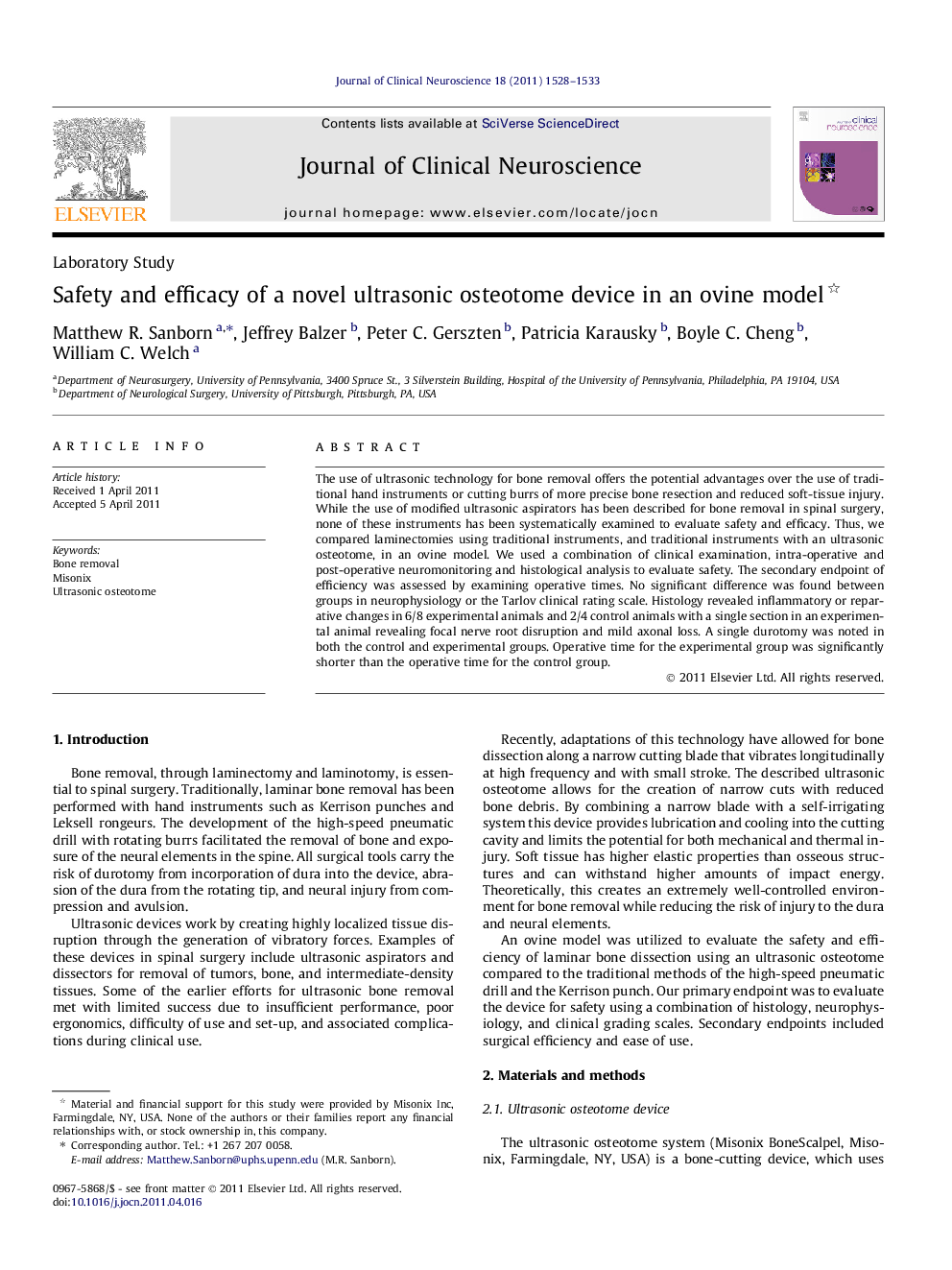| Article ID | Journal | Published Year | Pages | File Type |
|---|---|---|---|---|
| 3060630 | Journal of Clinical Neuroscience | 2011 | 6 Pages |
The use of ultrasonic technology for bone removal offers the potential advantages over the use of traditional hand instruments or cutting burrs of more precise bone resection and reduced soft-tissue injury. While the use of modified ultrasonic aspirators has been described for bone removal in spinal surgery, none of these instruments has been systematically examined to evaluate safety and efficacy. Thus, we compared laminectomies using traditional instruments, and traditional instruments with an ultrasonic osteotome, in an ovine model. We used a combination of clinical examination, intra-operative and post-operative neuromonitoring and histological analysis to evaluate safety. The secondary endpoint of efficiency was assessed by examining operative times. No significant difference was found between groups in neurophysiology or the Tarlov clinical rating scale. Histology revealed inflammatory or reparative changes in 6/8 experimental animals and 2/4 control animals with a single section in an experimental animal revealing focal nerve root disruption and mild axonal loss. A single durotomy was noted in both the control and experimental groups. Operative time for the experimental group was significantly shorter than the operative time for the control group.
